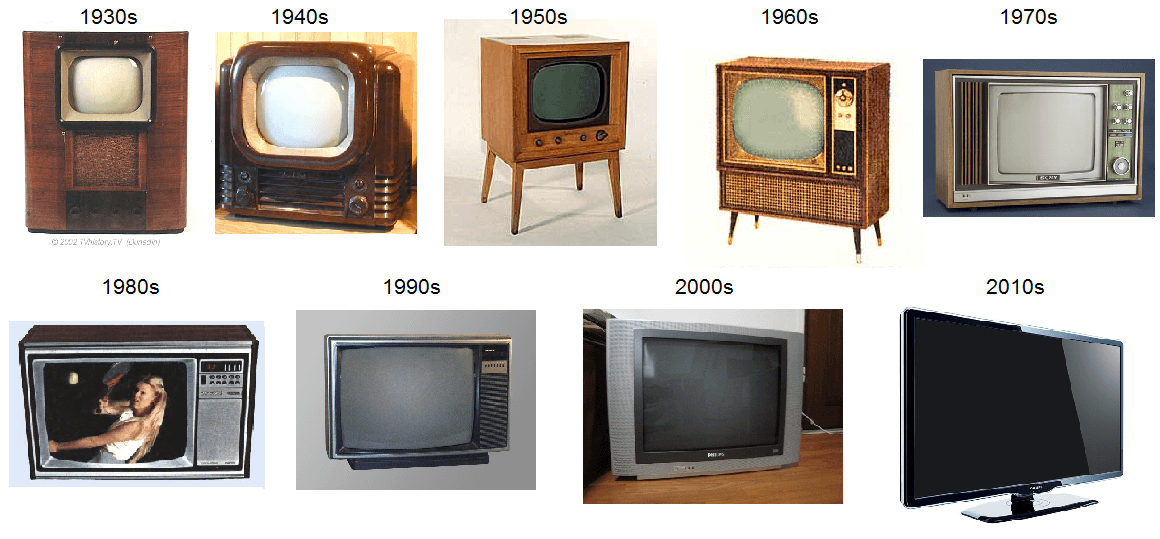TV history
-TV is an audio-visual media
Television, often abbreviated as TV, is a widely used electronic device and communication medium that receives and displays moving images and sound via broadcast signals, cables, or internet streaming. It allows users to watch a variety of content, including news, entertainment, sports, documentaries, and educational programs. Television sets typically consist of a display screen, audio speakers, and electronic circuitry for receiving, processing, and decoding television signals. Television programming is broadcasted over the airwaves via terrestrial transmission towers, delivered through cable or satellite networks, or streamed over the internet. Television plays a significant role in mass communication, shaping public opinion, entertaining audiences, and disseminating information on a wide range of topics.

TV history
TV history spans over a century, marked by significant technological advancements and cultural milestones.
Early Developments in tv history (Late 19th to Early 20th Century)
Conceptualization: The idea of transmitting moving images over a distance dates back to the late 19th century, with inventors and scientists exploring the possibility of creating a visual communication system.
Mechanical Television: Inventors like Paul Gottlieb Nipkow, Boris Rosing, and John Logie Baird experimented with mechanical television systems, using rotating disks with perforations (Nipkow disk) to capture and transmit images.
Emergence of Electronic Television in tv history
(1920s-1930s)
Electronic Television: Philo Farnsworth and Vladimir Zworykin independently developed electronic television systems based on the cathode ray tube (CRT) technology. Farnsworth demonstrated the first fully electronic television system in 1927, while Zworykin’s iconoscope and kinescope laid the foundation for electronic television broadcasting.
First Television Broadcasts: Experimental television broadcasts began in the 1920s and 1930s, with the first public demonstration in 1927 by Baird in London and the first electronic TV broadcasts by RCA in the United States in the early 1930s.
Rise of Television Broadcasting in tv history
(1940s-1950s)
Post-War Expansion: Television broadcasting expanded rapidly after World War II, with the availability of television sets and the establishment of broadcasting networks.
Introduction of Color Television: The first color television broadcasts took place in the 1950s, with CBS launching the first color television system in the United States in 1951. The adoption of color television grew throughout the decade, leading to the development of color standards like NTSC (North America), PAL (Europe), and SECAM (France).
Evolution of Television Technology in tv history
(1960s-1980s)
Transistorization: The transition from vacuum tubes to transistors in the 1960s led to the development of smaller, more reliable, and energy-efficient television sets.
Remote Control: The introduction of remote control devices in the 1960s allowed viewers to change channels and adjust settings without leaving their seats.
Cable Television: The 1970s saw the rise of cable television, offering viewers access to a wider range of channels and programming.
VCRs and Videotape: The introduction of videocassette recorders (VCRs) in the 1970s and 1980s revolutionized television viewing by allowing users to record and playback programs at their convenience.
Digital Television and HDTV (1990s-2000s) in tv history
Digital Television Transition: The transition from analog to digital television broadcasting began in the 1990s, offering improved picture and sound quality, as well as additional channels and services.
High-Definition Television (HDTV): HDTV was introduced in the late 1990s and early 2000s, offering significantly higher resolution and improved audio quality compared to standard-definition television.
Flat-Panel Displays: The development of flat-panel display technologies, such as LCD (Liquid Crystal Display) and plasma screens, led to the production of thinner, lighter, and more energy-efficient television sets.
Internet and Smart TVs (2010s-Present) in tv history
Internet-Connected TVs: The integration of internet connectivity into television sets gave rise to smart TVs, enabling access to online streaming services, interactive content, and app-based platforms.
Streaming Services: The proliferation of streaming services like Netflix, Hulu, and Amazon Prime Video transformed the way people consume television content, offering on-demand access to a vast library of movies and TV shows.
4K and Ultra HD: The introduction of 4K resolution and Ultra HD television sets in the 2010s further enhanced the viewing experience, providing even higher resolution and clarity.
